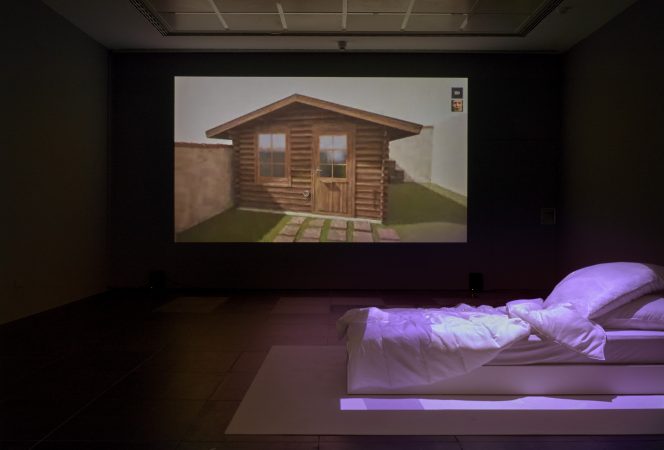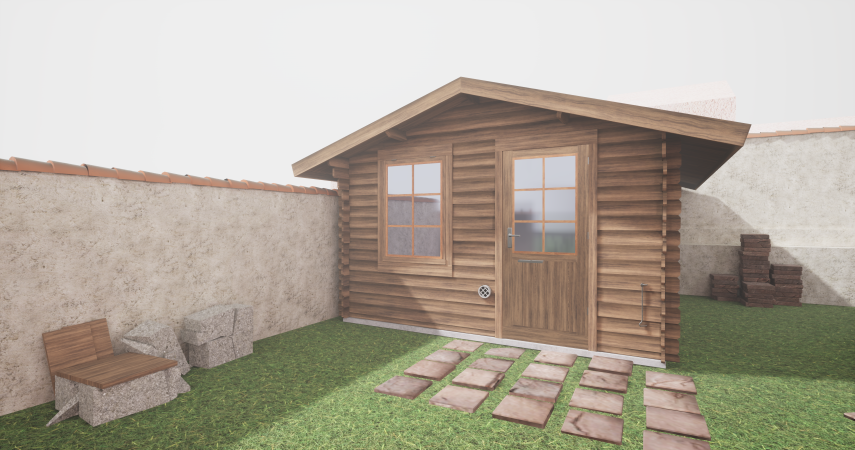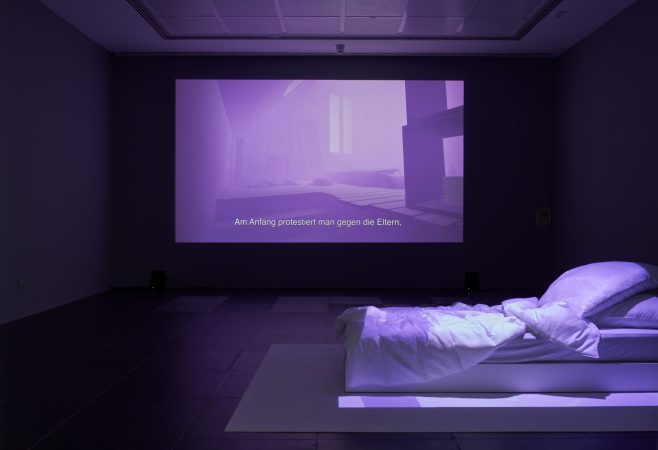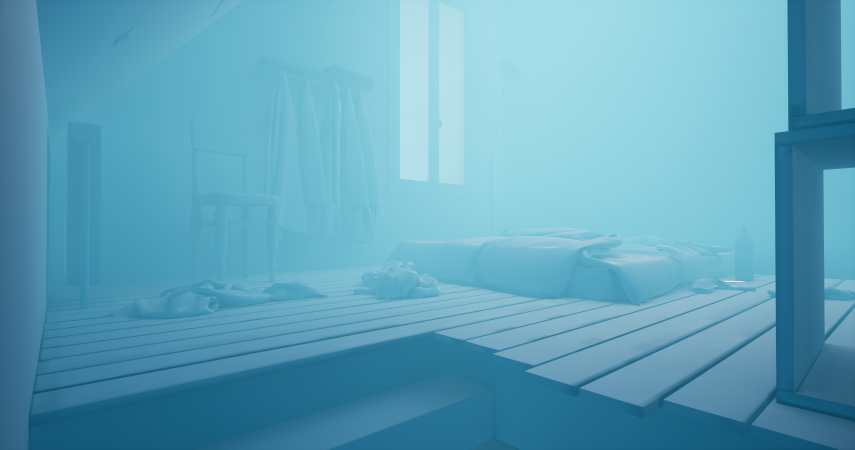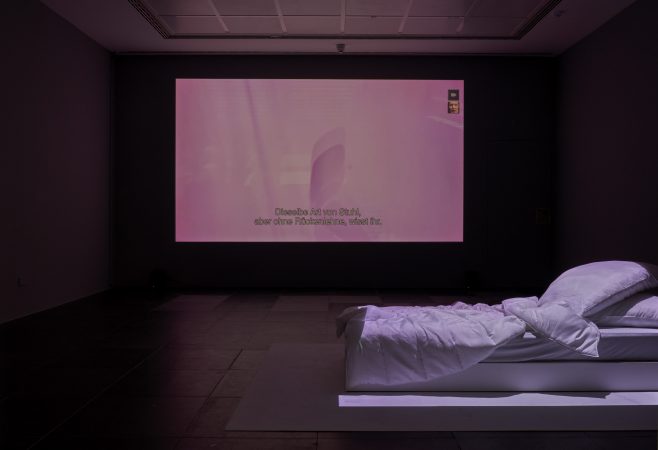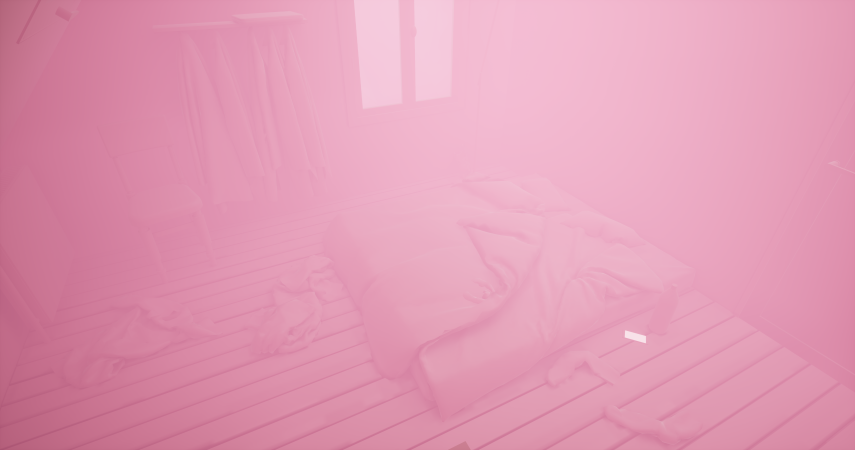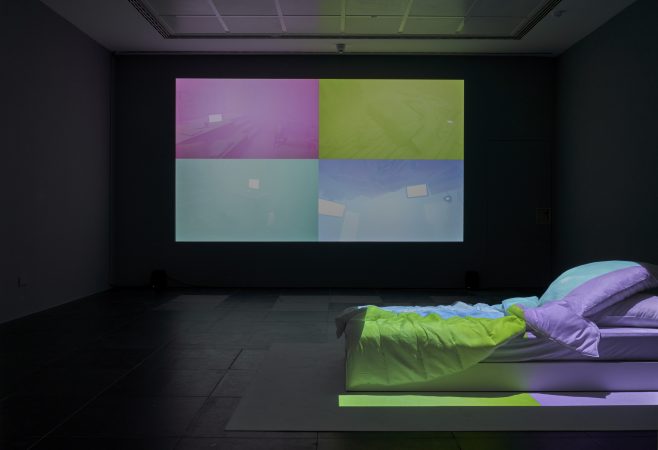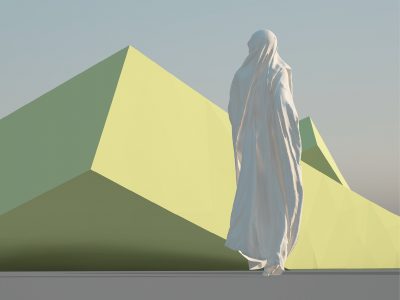Fleuryfontaine – I would prefer not to
2019
Video and space installation, 19 min
Produced by Le Fresnoy and supported by Palais des Paris, Takasaki (Japan), Frédéric Weigel, Yoshiko Suto
Courtesy the artists
Fleuryfontaine is French artist duo Galdric Fleury and Antoine Fontaine. Their work deals with the interaction between people and their environment. The question of dependency created by technology plays a central role.
In the video installation “I would prefer not to” Fleuryfontaine creates a portrait of Ael, a young man from the south of France who has been living as a “Hikikomori” for 13 years. The Japanese term refers to people, mostly men, who almost entirely withdraw from society and public life. Hikikomori rarely, or never, leave their rooms or apartments for months or even years.
Ael is a young man who actually exists. He lives in a hut in the garden of his parents’ house. Apart from getting himself cigarettes, he spends all his time in this hut. He maintains social contacts via the Internet. In this way, Fleuryfontaine also communicates with Ael and slowly gets to know him and his surroundings. This process is documented in the artistic work. Through a development environment for games, the artists translate Ael’s real world into a computer-generated world. Initially they have little knowledge of his world and follow their own ideas. Thus, the space only hints at it, and recognizable as if through fog. They send this digital reconstruction to Ael. We experience his initial immediate impressions and hear his comments, creating an analogy to walkthrough videos from the game world. Through this format, a form of how-to video, we experience Ael’s electively limited world from his individual perspective. We see via his movement, we experience what he experiences and hear what he says.
Over the course of time, Ael’s confidence in the artists grows. He gives them more detailed insights into his living environment. As such, Fleuryfontaine are then able to trace it more realistically. Towards the end of the film, we see a mobile phone video that Ael records during a short night walk into the real outside world. We see the increasing anxiety that Ael experiences when he leaves his trusted space.
A central aspect of “I would prefer not to” is boundaries. The virtual space of the recreated world is defined by the designed environment: in one version Ael cannot enter the hut; in another he cannot leave the garden. In reality, however, he has set his own boundaries to the outside world. This does not function as a restriction, but as a form of protection. He extends this space into the virtual, where he interacts socially, but the boundaries remain perceptible. While trying to leave the shelter, Ael reaches a psychological point that he cannot overcome on an evening walk. What remains are hints and inklings of his past: Images and experiences that do not let him go, and from whose inner limits he cannot break free.

